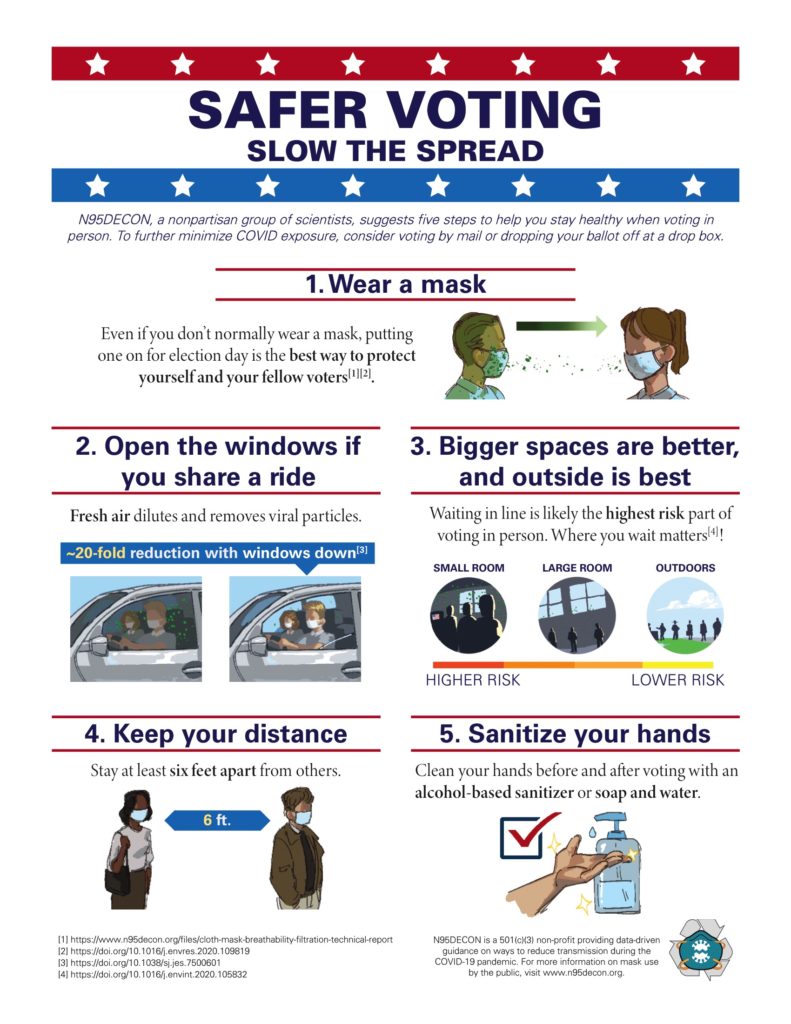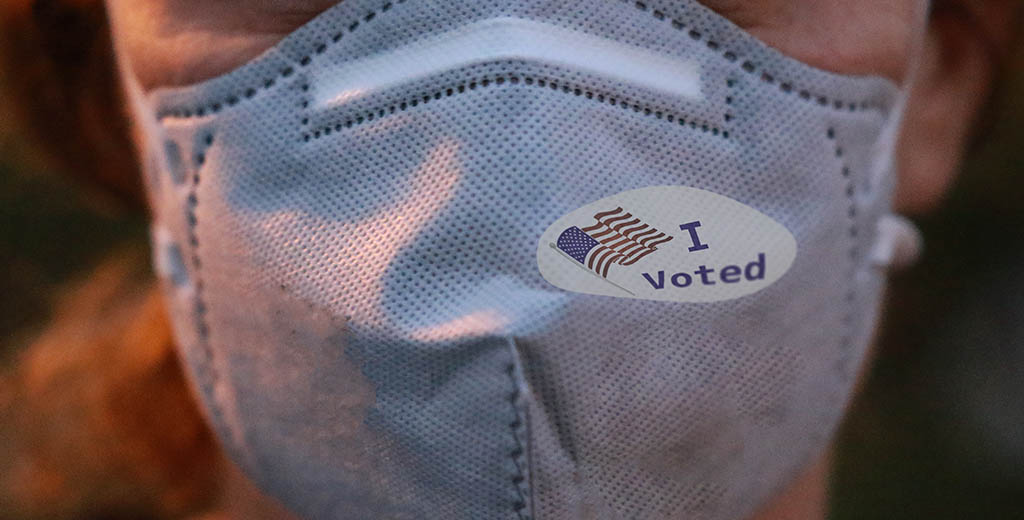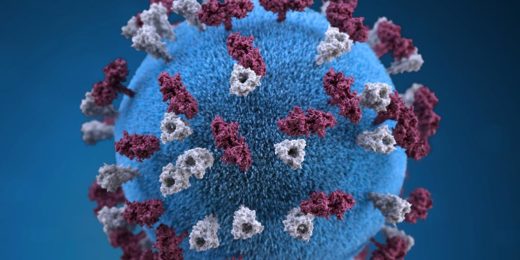Planning to vote in person?
A Stanford-originated multi-institutional scientific consortium has sifted through the medical literature to distill the best practical steps for keeping yourself, those around you, and those you come home to safe.
N95DECON was named for its initial focus on stretching the utility of personal protective equipment that was in short supply when COVID-19 began to spread throughout the United States.

"We did a scientific review of the literature to determine the best ways to decontaminate N95 respirators for re-use," says Stanford bioengineering graduate student Tyler Chen, who's been involved in N95DECON since its origination.
The group -- a non-profit, nonpartisan, all-volunteer consortium -- then branched out to reviewing studies of how SARS-CoV-2, the virus responsible for the pandemic, is transmitted, Chen said.
Their evidence-based recommendations for safer voting, summarized in this news release, flow from the common-sense, yet scientifically solid, observation that respiratory viruses are emitted from mouths and noses, and travel through space in droplets or remain aloft in aerosol suspension.
- Wear a mask. Masks pay off the most when you're in contact with strangers for an extended period of time. Voting in person on Election Day epitomizes this situation. Use an N95 if you have one. But a medical mask or cloth mask is still much better than nothing.
- Open the windows if you're sharing a ride. Sharing a vehicle with an infected stranger for 15 minutes may create a high risk of infection. Fresh air dilutes and removes viral particles. If you're sharing a ride or using public transportation, roll down the windows to improve fresh air circulation and reduce this risk.
- The bigger the space the better; outside is best of all. Waiting in line is probably the riskiest activity you'll face at your polling place. Exactly how and where you wait matters a lot: Waiting in line outdoors or in a big auditorium is much less risky than waiting in a narrow hallway or cramped space.
- Wherever you're standing, keep your distance. Maintaining a minimum of six feet between you and others reduces your risk of exposure.
- Sanitize your hands before and after voting. (Lots of people will be touching the same stuff.) Use hand-sanitizer with at least 70% alcohol content or, if that's unavailable, good old soap and water.
Top image by alexandra






